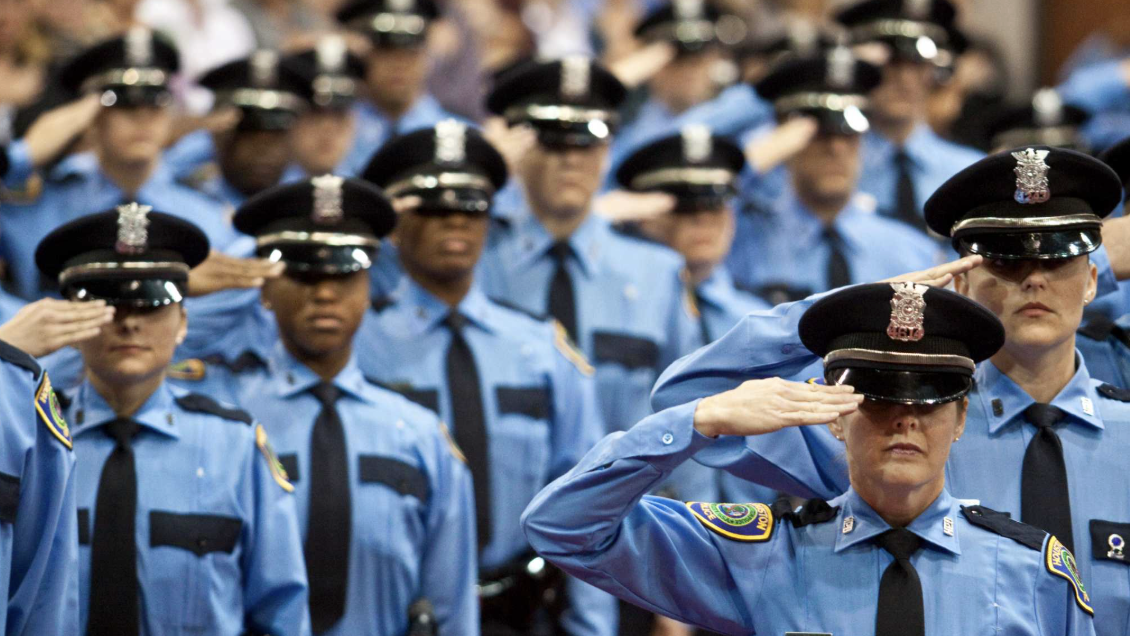
Across the United States, law enforcement agencies are trapped in a vicious cycle: as staffing collapses, so does investigative capacity. The result? Clearance rates plummet, crimes go unsolved, and the job becomes even less attractive to would-be officers. Departments aren't just short-staffed{:target="_blank"}—they're overwhelmed, under-resourced, and losing their ability to deliver justice. In 2023, just 51% of homicides and 41% of violent crimes{:target="_blank"} were cleared nationwide—a historic low{:target="_blank"} that directly tracks with dwindling police ranks. This strain is evident nationwide, where departments are now operating at just 91%{:target="_blank"} of authorized strength, a nearly 10% deficit that represents thousands of vacancies compounding the crisis.
The Staffing Collapse, By the Numbers
It's not just a retirement bubble—it's a sustained hemorrhage. Police resignations surged 47%{:target="_blank"} from 2019 to 2022, and retirements climbed 45%{:target="_blank"}, gutting experienced investigative units across the country. Nearly 70%{:target="_blank"} of agencies report major recruitment challenges compared to five years ago, and large departments are seeing 36%{:target="_blank"} fewer applicants than pre-pandemic levels.
Some of the country's most critical jurisdictions are now operating with dangerous shortfalls:
- The NYPD detective bureau dropped below 5,000{:target="_blank"} for the first time since COVID, with 359{:target="_blank"} detectives retiring in early 2025 alone.
- Indianapolis is operating with approximately 350{:target="_blank"} officers below its authorized strength, after losing more than 300{:target="_blank"} officers since 2019.
- In towns like Morris, Minnesota, and Washburn, Illinois{:target="_blank"}, staffing shortfalls became so severe that agencies were forced to disband entirely.
The Caseload Crisis
The caseload crisis is a defining feature of the current law enforcement staffing emergency. Best practices suggest limiting detectives to 4–6{:target="_blank"} homicide investigations and 72–96{:target="_blank"} total cases per year. Yet in reality, NYPD detectives are managing 500 to 600{:target="_blank"} cases annually, including violent felonies—an impossible workload that forces triage and routinely leaves difficult cases behind. 65%{:target="_blank"} of agencies have reduced services or specialized units because of staffing challenges, prioritizing patrol over investigations and other tactical work. Many departments report that investigative units are being stripped to backfill patrol rosters{:target="_blank"}, leaving casework to sit dormant and further increase backlogs.
This overload has a direct, negative impact on clearance rates and case outcomes. Overburdened detectives are forced to triage their caseloads{:target="_blank"}, focusing on only the most immediately solvable cases. As a result, many victims are left without closure, and offenders remain at large, fueling cycles of repeat victimization and community despair. Administrative burdens further sap investigative productivity, as detectives spend significant time on paperwork and clerical tasks due to a lack of civilian support staff{:target="_blank"}.
Fewer Cops, Fewer Cases Solved
Short staffing sabotages{:target="_blank"} every element of a case—starting within minutes after a crime occurs. In Salt Lake City, a serious staffing reduction more than doubled Priority 1 response times—from 8 to 17 minutes{:target="_blank"}—obliterating the "golden hour"{:target="_blank"} window for collecting key evidence. Cases with arrests within 15 minutes of police arrival clear at 85%{:target="_blank"}. Delays beyond that? Clearance drops to 34%{:target="_blank"}. Victim and witness cooperation suffers with every minute of slower response time. Research{:target="_blank"} has indicated that the likelihood of a suspect identification and swift arrest increases as response times become faster. Biological evidence{:target="_blank"} can degrade rapidly, and crime scene investigations can be compromised within a matter of minutes.
| Staffing Level | Homicide Clearance | Violent Crime Clearance |
|---|---|---|
| Adequate (90–100%) | 65–90% (e.g., Vermont, Delaware) | 50–60% |
| Critical (<85%) | 30–45% (e.g., Chicago, New Orleans) | 20–35% |
Recruitment, Burnout, and Broken Trust
The consequences go beyond clearance stats. They strike at the morale of officers and the trust of the public. As veteran officers leave, agencies are forced to fill gaps with new recruits who may lack adequate training and mentorship, further increasing risk and stress for everyone on the job. In neighborhoods where shooting clearance rates are low, potential witnesses increasingly refuse to speak with police—citing fear, frustration, and futility{:target="_blank"}. This contributes to the "negative perceptions of policing,"{:target="_blank"} which many agencies cite as a top recruitment hurdle, worsened by viral videos of unsolved crimes and delayed justice. Declining officer morale and chronic understaffing make it harder to meet public expectations for safety, fueling community anxiety and distrust.
Survey results have found that 82%{:target="_blank"} of officers report working in understaffed agencies, and 86%{:target="_blank"} say understaffing impacts their ability to take time for wellness or breaks. Nearly half{:target="_blank"} say their safety is frequently compromised due to low staffing, with 63%{:target="_blank"} citing longer response times and 56%{:target="_blank"} reporting more high-risks calls handled solo. Officers describe an exhausting cycle of forced overtime, missed days off, and canceled training, with 43%{:target="_blank"} unable to take necessary breaks on shift. Unsurprisingly, burnout{:target="_blank"} is rampant–93%{:target="_blank"} of officers agree that their personal wellness affects job performance, and 40%{:target="_blank"} have experienced a "near miss" at work due to stress and fatigue.
The Cost of Inaction
Case clearance isn't just a metric—it's the cornerstone of public safety. When agencies are too short-staffed to respond quickly, preserve evidence, or assign a dedicated investigator, justice is delayed or denied. The data is clear. Law enforcement agencies can't solve cases if they can't staff them, and if they can't solve cases, the justice system breaks down–one unsolved crime at a time.



